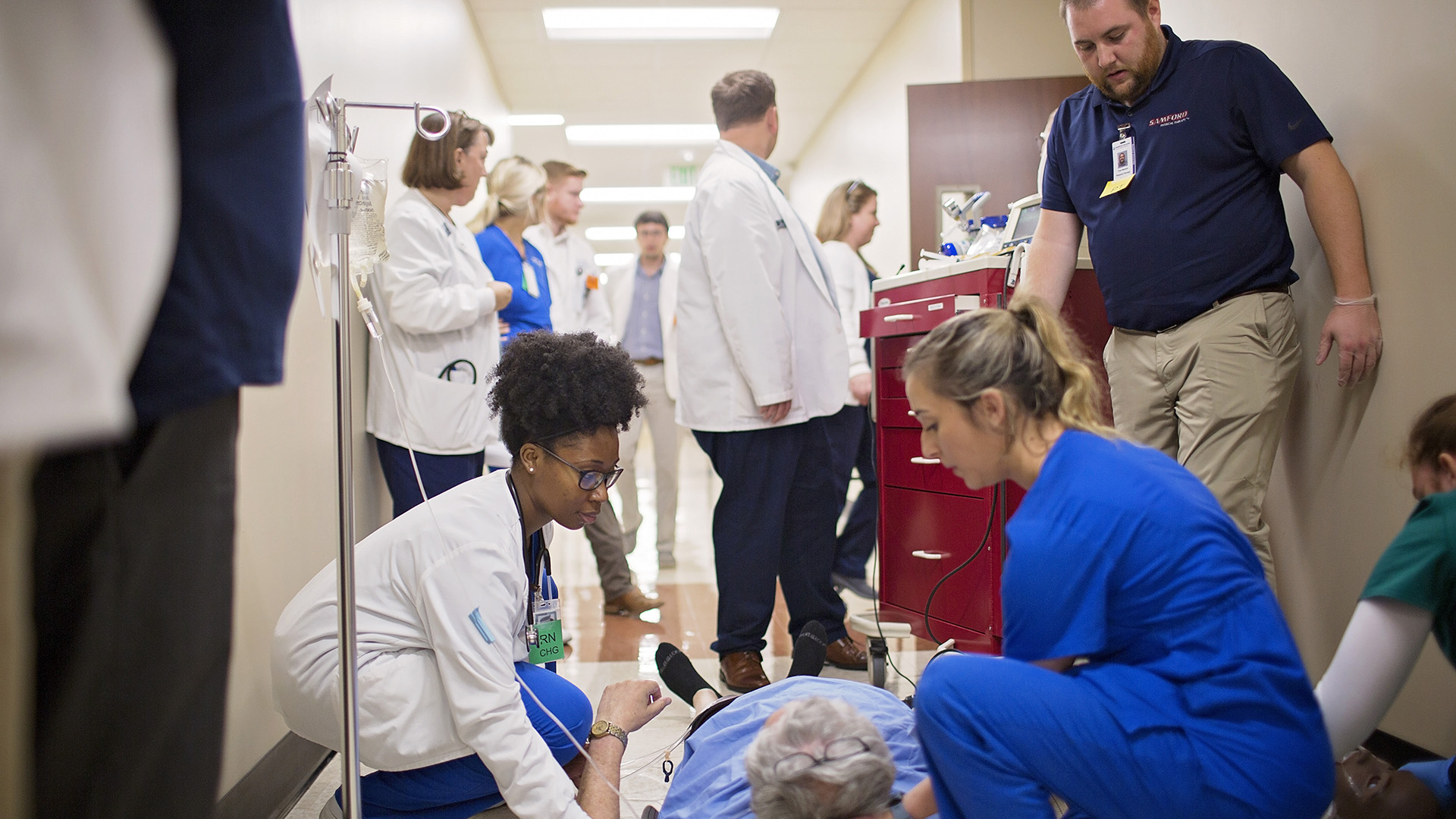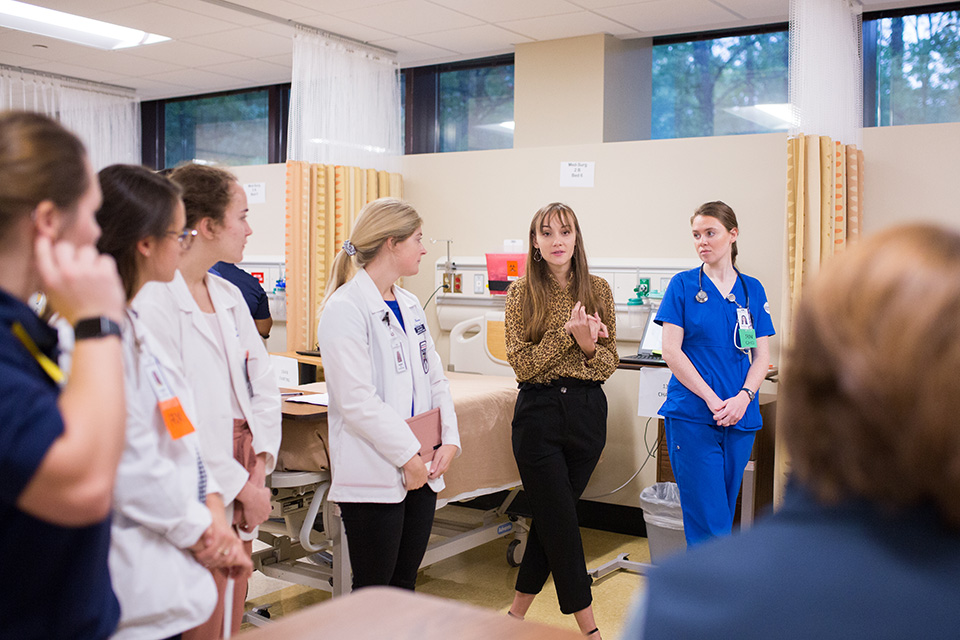
This is not your everyday simulation experience. With more than 25 patient cases and 200 students participating over two days, Samford University’s annual Acute Care Simulation takes experiential learning to a new level, challenging students to communicate, collaborate and think critically as an interprofessional health care team.
Hosted by the College of Health Sciences’ Experiential Learning and Simulation Center, the Acute Care Simulation is just one of the hundreds of simulation events that take place each year within the center, but none compare to its scale. “This simulation is unique. To our knowledge, we are the only simulation center in the country who executes a simulation of this size,” said Jill Pence, associate professor and executive director of the Experiential Learning and Simulation Center.
Now in its third-year, the Acute Care Simulation is an unfolding case study, repeated over two days, that involves graduate and undergraduate students from six programs, including nursing, pharmacy, social work, physical therapy, respiratory care and nurse anesthesia. It also utilizes 28 standardized patients, or professionals trained to act out symptoms and reactions, as patients or caregivers.
The simulation utilized the entire Experiential Learning and Simulation Center, transforming its labs to be used as an emergency room, four medical surgical units, intensive care unit, labor and delivery unit and pediatric unit. “Our center, which is located on a single floor, lends itself well for a simulation like this because we can run multiple units with multiple scenarios at one time,” Pence said. “This allows our students to experience how the flow of patient care works.”

Designed to build students’ knowledge and skills in patient care and collaborative practice in a team environment, the simulation challenges students in various ways—from figuring out how to effectively communicate with a patient to managing medical emergencies, like cardiac arrest or respiratory distress.
“Simulation prepares our students to be the best caregivers they can be. It gives them the opportunity to practice within an interprofessional team—communicating with each other and developing a respect for the different roles,” Pence said. “We emphasize patient safety, communication, teamwork, collaboration, and those are very important to serve our communities of interest, which are our patients.”
Take a Tour
Look inside the Experiential Learning and Simulation Center, which spans 22,000 square feet and offers discipline-specific and interdisciplinary learning opportunities across the simulation continuum.
